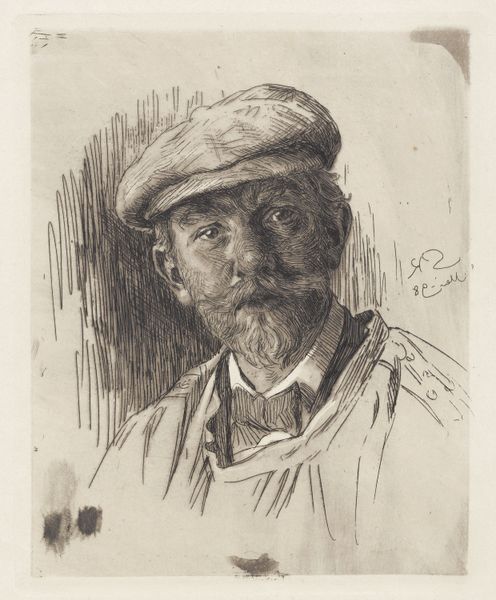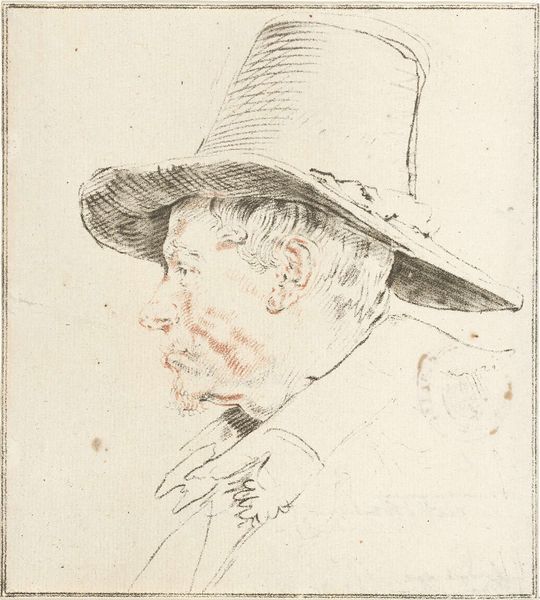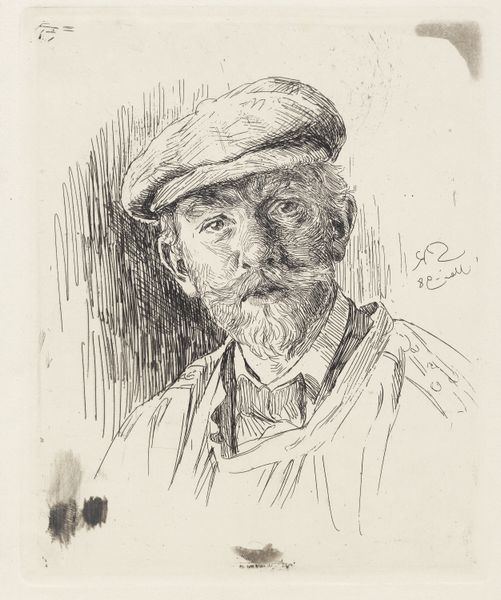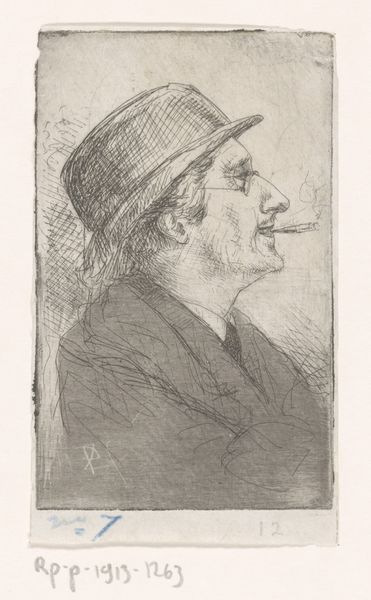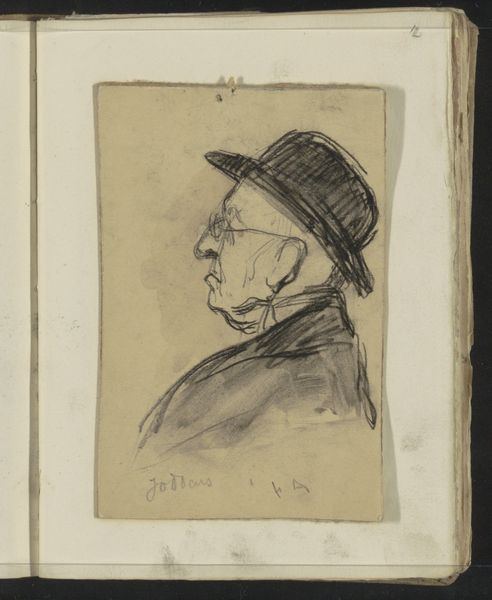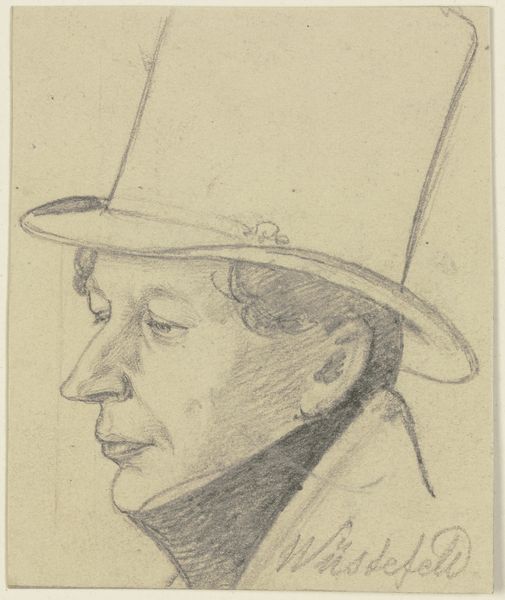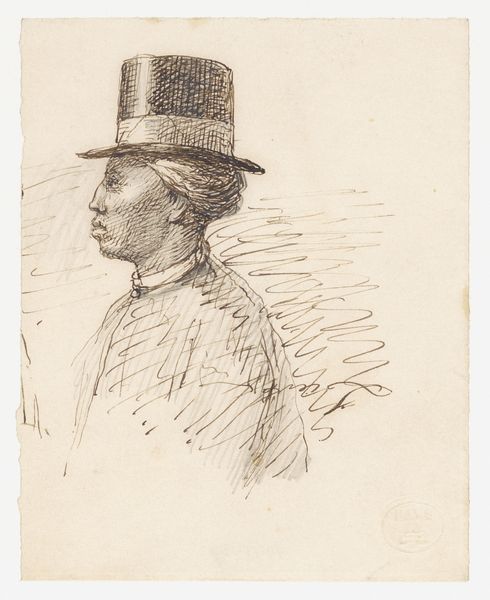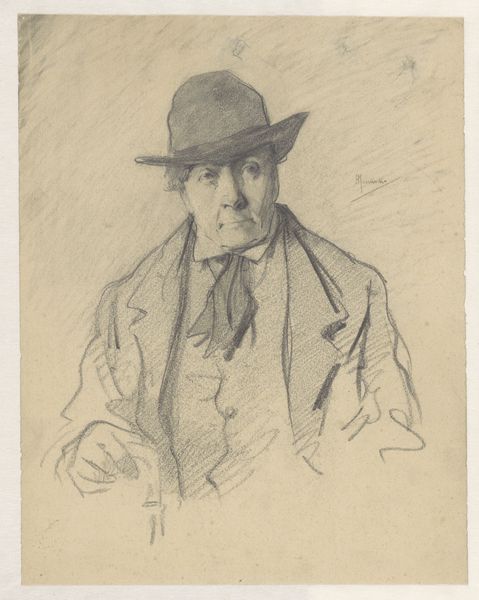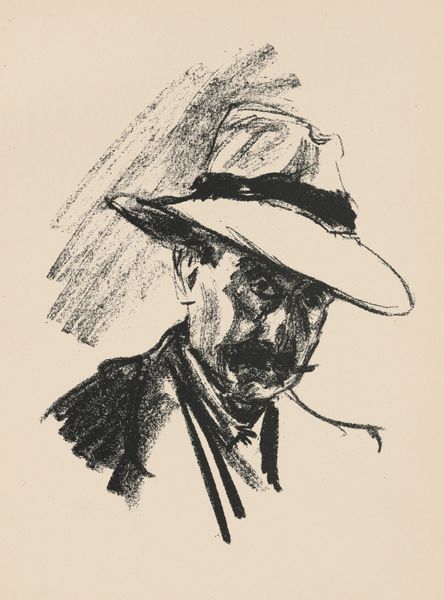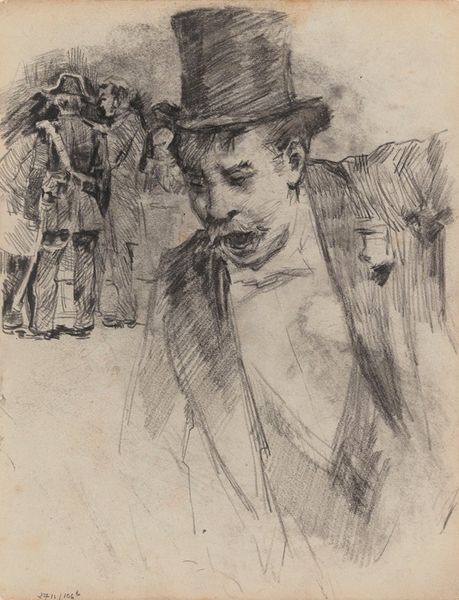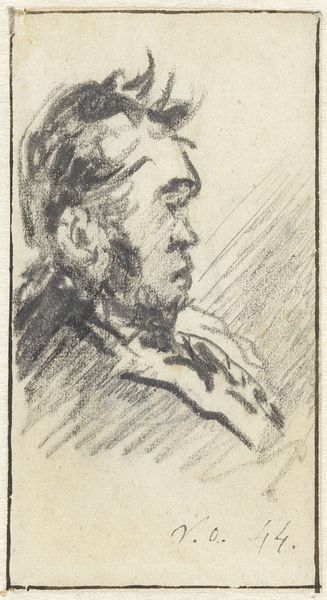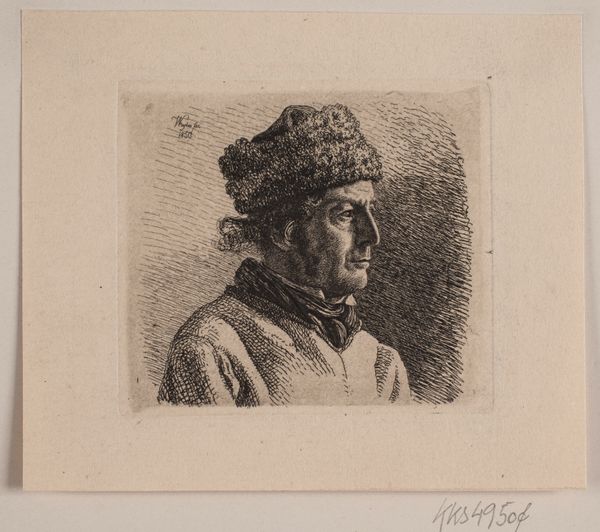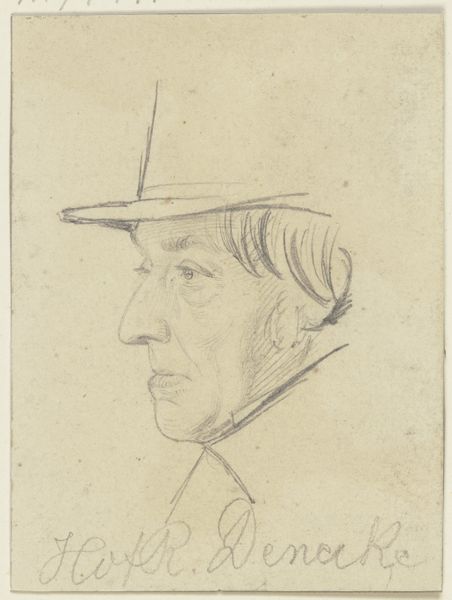
Copyright: Rijks Museum: Open Domain
Editor: Here we have "Man met hoed," or "Man with a Hat," a graphite drawing by Willem Witsen, made sometime between 1893 and 1897. The quick, almost casual, lines give it an intimate, informal feel. How do you read this work, focusing on its inherent qualities? Curator: Initially, the emphasis on line is quite striking. Witsen employs a rapid, almost stenographic hand, favoring suggestion over precise representation. Note how the weight of the graphite varies, creating depth and shadow primarily within the face and hat. Are you persuaded the structural integrity lies in this contrast between the face and the sketched background? Editor: I think so, yes. It makes the subject seem very present. But why the focus on this specific profile? Curator: Consider the formal properties of a profile. It's inherently about delineation and contour. By foregoing the complexity of a full frontal view, Witsen reduces the portrait to its most essential linear elements. He's not necessarily after psychological depth but perhaps a study of form and light. Note how the hat becomes an extension of the facial silhouette, an exercise in continuous line and shape. Do you perceive any areas where the composition transcends simple representation? Editor: The seemingly unfinished lines above the subject and to his left – it breaks with conventional portraits of the time. It pushes the eye beyond the subject’s immediate form. Curator: Precisely. These serve not only as framing devices, creating a plane that would enclose the piece, but draw the viewer into active participation with its structure and form. Overall, this work speaks volumes about reduction and graphic articulation. Editor: Thank you! Looking at it with your explanation gives me new understanding about the importance of the form in interpreting Witsen's intention in this expressive drawing.
Comments
No comments
Be the first to comment and join the conversation on the ultimate creative platform.

